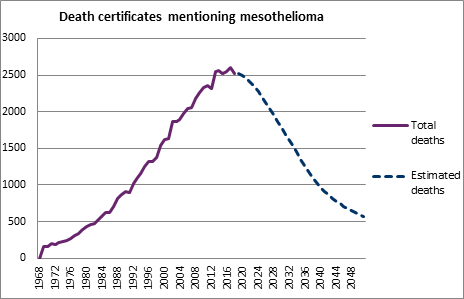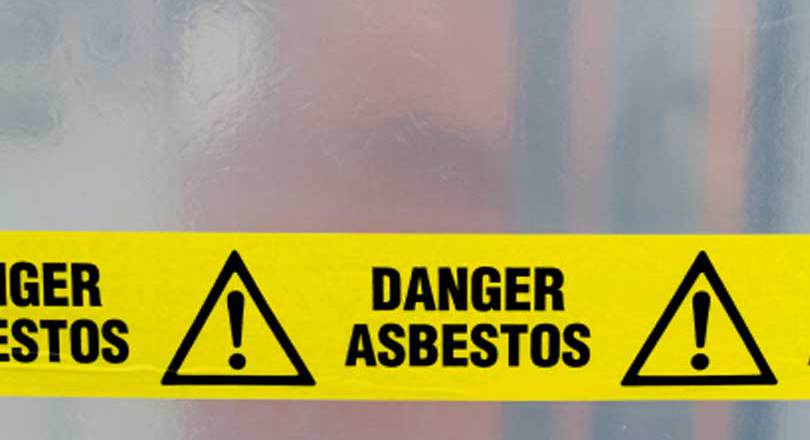The figure represents a slight decline compared with the year before, though the rate has remained fairly static over the past five years.
Annual deaths due to mesothelioma have increased by 85% in the last 20 years, and 10-fold since the late 1960s when consistent recording of mesothelioma deaths started.
Figures released simultaneously by the HSE reveal that 147 people died on the job last year, a slight increase on the year before.
Workers aged 65 and over had a far higher rate of fatal accident than the population as a whole (1.61 per 100,000 workers, compared with 0.45) though the rate is lower than in previous years.
The most common cause of fatal accident continues to be falling from height.
Mesothelioma is a cancer of the lining of organs – most commonly the lungs, the heart or the abdominal cavity – caused almost exclusively by exposure to asbestos. Asbestos can also cause other forms of cancer, asbestosis and plural plaques.
The carcinogenic fibre was used heavily between the 1950s and 1970s. Because asbestos is resistant to heat, it was used extensively as a building material, and in a range of other products such as machinery and vehicle brakes.
It was also commonly used in ship building. Local authority areas with the highest rates of mesothelioma deaths have a long association with the shipbuilding industry.
The HSE uses a standardised mortality ratio (SMR) to compare death rates in a particular geographical area with the rate for Britain as a whole.
SMR values higher than 100 indicate that mesothelioma rates are higher than for Britain as a whole, while values lower than 100 indicate the reverse.

In 2017, Barrow-in-Furness had male and female SMRs of 431.9 and 243.5 respectively. In West Dunbartonshire, the male SMR is 389, while the female is 250. In Plymouth, the male SMR is 271, and female 84.
The HSE estimates that, after next year, the annual deaths will start to decline. It has made similar predictions in the past, however, and been forced to revise its estimate.
Although its use was completely banned in 1999, it is still present in hundreds of thousands of buildings.
Asbestos-related diseases can take decades to develop. While the majority of deaths nowadays are a consequence of past failings, many people are still exposed today.

